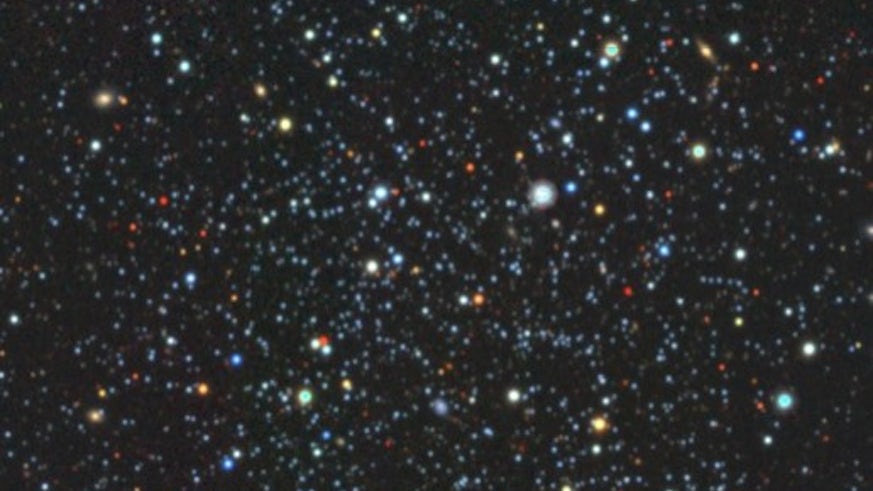Gang of black holes spotted at centre of star cluster
5 July 2021

Scientists have been left stunned by a gang of more than 100 black holes sitting at the centre of a large collection of stars over 80,000 light years from Earth.
The finding has been made inside Palomar 5, a 10-billion-year-old collection of stars that orbits around the Milky Way.
Reporting their findings today in Nature Astronomy, the scientists say Palomar 5 contains about three times as many black holes as they would expect to find in a star cluster of this size, with each black hole having a mass of about 20 times that of the Sun.
They believe that this troupe of ginormous clumps of matter, through which nothing can escape, could be responsible for the mass evacuation of stars from Palomar 5 in what is known as a ‘tidal stream’.
A tidal stream is a thin band of stars that are believed to have once been a globular cluster or dwarf galaxy, and that have now been pulled away along the cluster orbit by the Galactic tides.
Palomar 5 has streams of stars extending outward toward the front and rear of the orbital path of itself, stretching to distances of 13,000 light years.
“We do not know how these streams form, but one idea is that they are disrupted star clusters,” said lead author of the paper Prof Mark Gieles, from the Institute of Cosmos Sciences of the University of Barcelona.
“However, none of the recently discovered streams have a star cluster associated with them, hence we cannot be sure. So, to understand how these streams formed, we need to study one with a stellar system associated with it. Palomar 5 is the only case, making it a Rosetta Stone for understanding stream formation and that is why we studied it in detail.”
To arrive at their findings, the team simulated the orbits and the evolution of each star within Palomar 5 until it finally died, varying the initial properties of the cluster until a good match with the observations of the stream and the cluster was found.
They were able to show that Palomar 5 formed with a lower population of black holes, but then stars escaped more efficiently leaving the black holes behind.
They believe the black holes dynamically puffed up the cluster in gravitational slingshot interactions with stars, which led to even more escaping stars and the formation of the tidal stream.
Co-author of the study Dr Fabio Antonini, from Cardiff University’s School of Physics and Astronomy, said: “What we have shown is that an unusually large collection of black holes may not be uncommon, and that the same number, or perhaps even more, could be sitting at the centre of other star clusters that have formed tidal streams”.
The new findings could have significant implications for the study of black holes themselves and the ripples of gravitational waves that are produced when two of them collide and merge together.
“It is believed that a large fraction of binary black hole mergers form in star clusters,” Dr Antonini continued.
“A big unknown in this scenario is how many black holes there are in clusters, which is difficult to work out because we cannot see black holes. Our new method gives us a way to learn how many black holes there are in a star cluster by simply looking at the stars they eject.’’
Palomar 5 is a globular cluster discovered in 1950 by Walter Baade. It is in the Serpens constellation about 80,000 light-years from Earth and is one of the roughly 150 globular clusters that orbit around the Milky Way.
It is one of the “fluffiest” clusters in the halo of our Galaxy, with the average distance between the stars being a few light-years, comparable to the distance from the Sun to its nearest star.
The team say roughly a billion years from now Palomar 5 will consist entirely of black holes.
